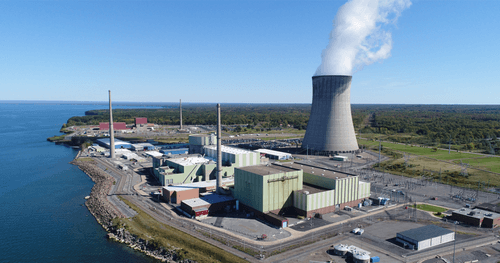Tax credits for low-carbon hydrogen production in the Inflation Reduction Act represent one of the climate law’s most ambitious timelines for implementation, with the provision taking effect late last year. That means low-carbon hydrogen producers can, in theory, already begin applying for tax credits of up to $3 per kilogram, depending on the emissions intensity of production.
However, IRS guidelines for clean hydrogen production have yet to be issued, and industry groups, environmentalists, and scientists are taking sides in a debate over whether the tax credits should require hydrogen made via electrolysis to be powered exclusively with new sources of zero-carbon electricity, a concept known as “additionality.”
In a February letter, a coalition of environmental groups and aspiring hydrogen producers expressed concern to the IRS that guidelines for 45V clean hydrogen production tax credit implementation would not be sufficiently rigorous, especially when it comes to grid-connected electrolyzers. Citing research from Princeton University, the group argued that grid-powered electrolyzers siphon off renewable generation capacity, requiring the grid to be backfilled by fossil power and thus producing twice the carbon emissions that natural gas-derived hydrogen emits currently.
(The group, which includes the National Resources Defense Council, Intersect Power, and EDF Renewables, among others, also argues in favor of hourly tracking, which they say would better guarantee energy used for electrolysis comes from clean sources, and deliverability, requiring renewable power to be sourced from within a reasonable geographic distance. In February, the European Commission issued a directive phasing in, over a number of years, rules for additionality, hourly tracking, and deliverability.)
Benton Arnett, director of markets and policy for the Washington, DC-based Nuclear Energy Institute, a nuclear industry trade association, does not believe the concept of additionality was part of Congress’s intent when the body crafted the Inflation Reduction Act. For one, he notes, the text of the 45V provision for clean hydrogen production includes specific prescriptions for the carbon intensity of hydrogen production as well as for the analysis of life-cycle emissions, but says nothing about additionality.
“When you get legislative text, you don’t usually have prescriptions on carbon intensities for the different levels of subsidies,” he said. “You don’t usually have specifications on what life-cycle analysis model to use – and yet all of that is included in the 45V text. Clearly [additionality] is not something that was intended by Congress.”
Reading further into the law, section 45V contains precise language allowing renewable electricity used for the production of hydrogen to also claim renewable energy tax credits, or “stacking” of tax credits. Further, the statute includes a subsection spelling out that producers of nuclear power used to make clean hydrogen can also avail themselves of the 45U tax credit for zero-emission nuclear energy production.
“It’s really hard for me to think of a scenario where the drafters of the IRA would have included a provision allowing existing nuclear assets to claim 45V production tax credits and also be thinking that additionality is something that would be applied,” Arnett said.

The NEI emphasized these provisions in a letter to Treasury and IRS officials last month, noting that, “given the ability to stack tax credits for existing sources with section 45V, the timing of when the section 45V credit was made available” – December 31, 2022 – “and congressional support for leveraging existing nuclear plants to produce hydrogen, it is clear Congress intended for existing facilities to be eligible to supply electricity for clean hydrogen production.”
Arnett adds that the debate around additionally ignores the fact that not all power generation assets are created equal. Nuclear facilities, in particular, given the regulatory and capital demands, do not fit within a model of additionality geared toward new renewable energy capacity. (Hydrogen developers have also proposed to use existing hydropower sources for projects in the Pacific Northwest and Northeast.)
This year, the NEI conducted a survey of its 19 member companies representing 80 nuclear facilities in the US. The survey found that 57% of the facilities are considering generation of carbon-free hydrogen. Meanwhile, the US Department of Energy’s hydrogen hubs grant program requires that one hub produce hydrogen from nuclear sources; and the DOE has teamed up with several utilities to demonstrate hydrogen production at nuclear power plants, including Constellation’s Nine Mile Point Power Station, Energy Harbor’s Davis-Besse Nuclear Power Station, Xcel Energy’s Prairie Island Nuclear Generating Plant, and Arizona Public Service’s Palo Verde Generating Station.
“We’re worried that if [additionality] goes into effect it’s going to remove a valuable asset for producing hydrogen from the system, and it’s really going to slow down penetration of hydrogen into the market,” Arnett said.
As for the research underlying arguments in favor of additionality, Arnett says that it appears to take the 45V provision in a vacuum, without considering some of the larger changes that are taking shape in US electricity markets. For one, the research, which argues that electrolyzers would absorb renewable capacity and require fossil-based generation to backfill to meet demand, assumes that natural gas generation will continue to be the marginal producer on the electrical grid.
“One of the shortcomings of that is that the IRA has hundreds of billions of dollars of incentives aimed at changing that very dynamic. The whole goal of the IRA is that marginal additions of power are carbon-free,” he said, noting incentives for clean electricity production tax credits, investment tax credits, supply chain buildouts, and loan program office support for all of these projects.




